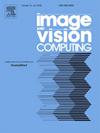PTPFusion: A progressive infrared and visible image fusion network based on texture preserving
IF 4.2
3区 计算机科学
Q2 COMPUTER SCIENCE, ARTIFICIAL INTELLIGENCE
引用次数: 0
Abstract
Infrared and visible image fusion aims to provide a more comprehensive image for downstream tasks by highlighting the main target and maintaining rich texture information. Image fusion methods based on deep learning suffer from insufficient multimodal information extraction and texture loss. In this paper, we propose a texture-preserving progressive fusion network (PTPFusion) to extract complementary information from multimodal images to solve these issues. To reduce image texture loss, we design multiple consecutive texture-preserving blocks (TPB) to enhance fused texture. The TPB can enhance the features by using a parallel architecture consisting of a residual block and derivative operators. In addition, a novel cross-channel attention (CCA) fusion module is developed to obtain complementary information by modeling global feature interactions via cross-queries mechanism, followed by information fusion to highlight the feature of the salient target. To avoid information loss, the extracted features at different stages are merged as the output of TPB. Finally, the fused image will be generated by the decoder. Extensive experiments on three datasets show that our proposed fusion algorithm is better than existing state-of-the-art methods.
PTPFusion:基于纹理保护的渐进式红外与可见光图像融合网络
红外和可见光图像融合旨在通过突出主要目标和保持丰富的纹理信息,为下游任务提供更全面的图像。基于深度学习的图像融合方法存在多模态信息提取不足和纹理丢失的问题。本文提出了一种纹理保留渐进融合网络(PTPFusion),从多模态图像中提取互补信息,以解决这些问题。为了减少图像纹理损失,我们设计了多个连续的纹理保护块(TPB)来增强融合纹理。TPB 可以通过使用由残差块和导数算子组成的并行架构来增强特征。此外,我们还开发了一种新颖的跨通道注意力(CCA)融合模块,通过交叉查询机制对全局特征相互作用进行建模,从而获得互补信息,然后进行信息融合,以突出显著目标的特征。为避免信息丢失,不同阶段提取的特征将作为 TPB 的输出进行合并。最后,解码器将生成融合后的图像。在三个数据集上进行的大量实验表明,我们提出的融合算法优于现有的先进方法。
本文章由计算机程序翻译,如有差异,请以英文原文为准。
求助全文
约1分钟内获得全文
求助全文
来源期刊

Image and Vision Computing
工程技术-工程:电子与电气
CiteScore
8.50
自引率
8.50%
发文量
143
审稿时长
7.8 months
期刊介绍:
Image and Vision Computing has as a primary aim the provision of an effective medium of interchange for the results of high quality theoretical and applied research fundamental to all aspects of image interpretation and computer vision. The journal publishes work that proposes new image interpretation and computer vision methodology or addresses the application of such methods to real world scenes. It seeks to strengthen a deeper understanding in the discipline by encouraging the quantitative comparison and performance evaluation of the proposed methodology. The coverage includes: image interpretation, scene modelling, object recognition and tracking, shape analysis, monitoring and surveillance, active vision and robotic systems, SLAM, biologically-inspired computer vision, motion analysis, stereo vision, document image understanding, character and handwritten text recognition, face and gesture recognition, biometrics, vision-based human-computer interaction, human activity and behavior understanding, data fusion from multiple sensor inputs, image databases.
 求助内容:
求助内容: 应助结果提醒方式:
应助结果提醒方式:


